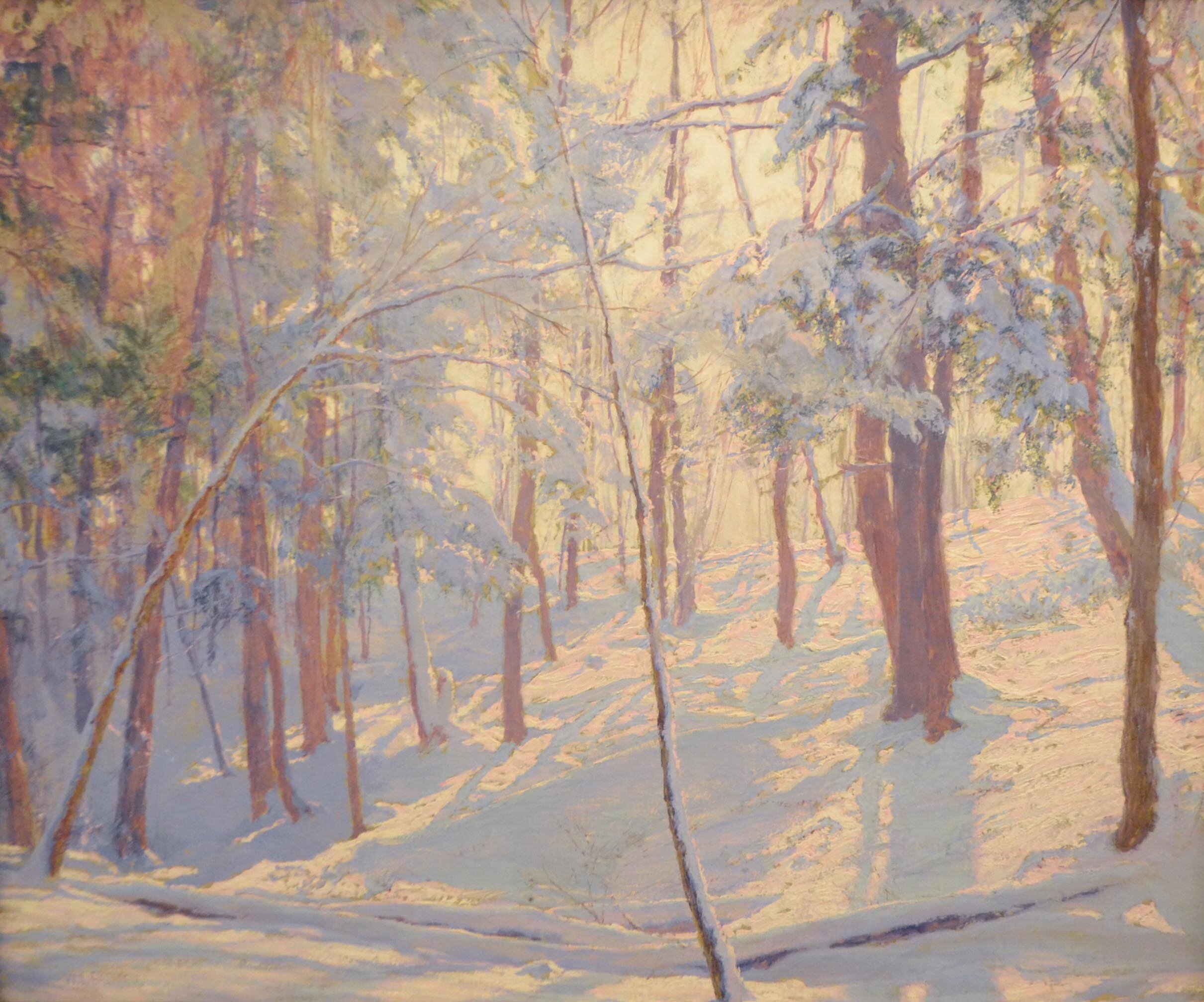Curator’s Corner: Walter Launt Palmer
Curator's Corner
Spring is here! When it comes to the mountains of North Carolina, that can mean shifts between warmer days and colder days before things even out and become truly Spring-like. April can sometimes bring the occasional snow shower (and in the past, so has May, but we won't hope for that). So, in the usual mountain-weather way, before we fully embrace Spring, we thought we'd revisit and send a formal goodbye to winter by featuring a work from our permanent collection, "Winter Snow Scene."
American Impressionist Walter Launt Palmer is most famous for his snow scenes, so much so that he has been referred to as "the painter of the American winter." Impressionists like Palmer were obsessed with capturing changes in light outdoors and how this altered our perception of (and even relationship to) the landscape. However, instead of risking frost and frozen limb to paint outside in the snow all day, Palmer used photographs he took to study the effects of natural light and then painted his scenes from memory.
Although the photos for reference were in black and white, Palmer realized that not even snow is pure white. When light shines on the ice crystals of the snow, it is scattered and bounces off back into our eyes. White light contains all wavelengths of visible light, all the colors we can see, which combined together appears to us as white. Realizing this, he introduced color in this painting, choosing to enhance the snow with pink highlights and blue shadows — thus creating a three-dimensional effect.
Adding to the interest of this painting, Palmer created the illusion of additional depth, texture, and the soft tactility of snow by mixing oil paint and chalky pastel with one another. Painters, have you experimented with mixing traditional mediums in a unique way like this?
Image Credit: Walter Launt Palmer (1854-1932). Winter Snow Scene, c. 1900. Oil and pastel on panel. BRAHM Alexander Collection, 2016.01.04.

